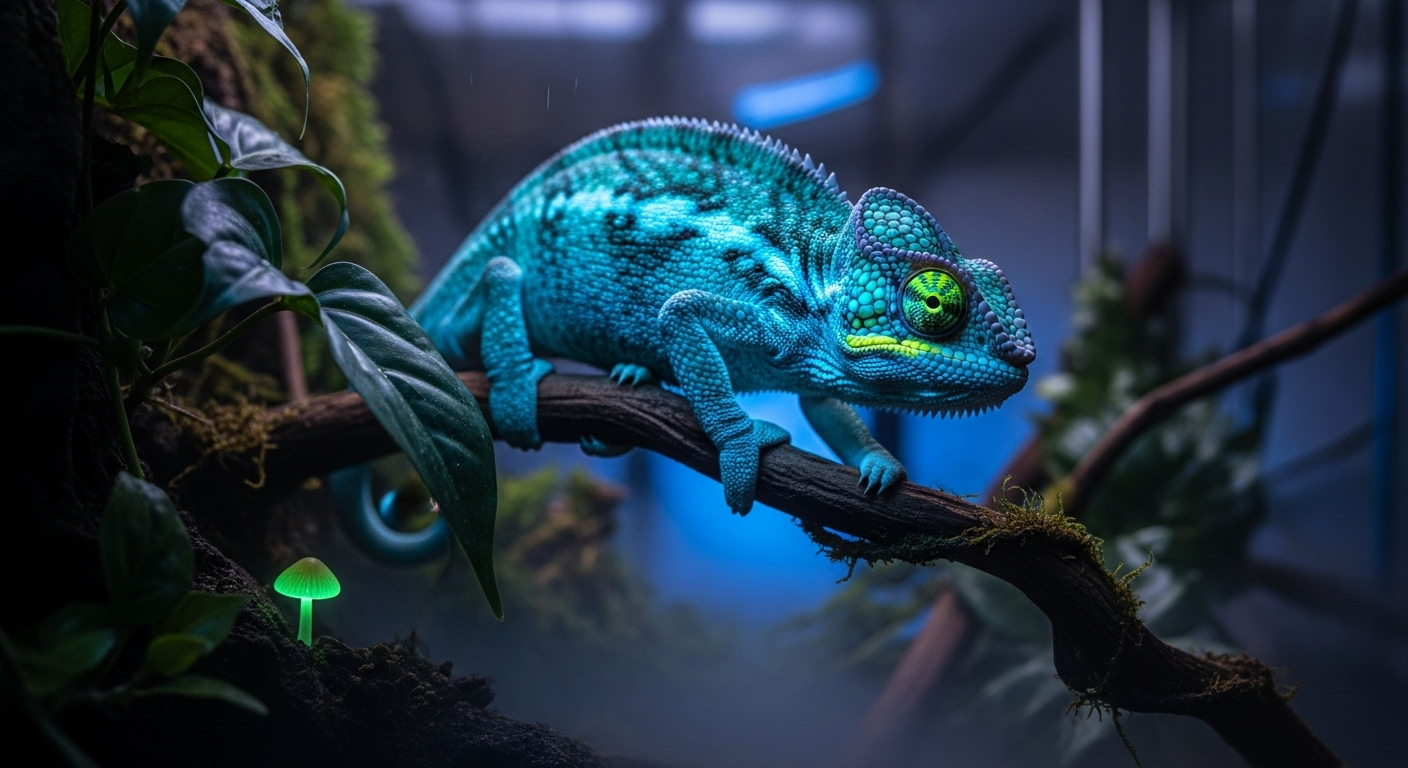Bioluminescent Pets: The Glowing Frontier of Companion Animals
In the ever-evolving world of pet ownership, a new trend is illuminating the horizon: bioluminescent pets. These fascinating creatures, capable of producing their own light, are captivating the imaginations of animal enthusiasts and scientists alike. From glowing fish to luminous reptiles, the realm of bioluminescent pets offers a unique blend of natural wonder and cutting-edge biotechnology.

The Science Behind Bioluminescent Pets
Bioluminescence is a natural process where living organisms produce light through a chemical reaction. In the wild, this ability serves various purposes, from attracting mates to confusing predators. The science behind bioluminescent pets involves harnessing this natural ability or introducing it through genetic modification.
The most common bioluminescent pets are GloFish, which were originally developed to detect water pollution. These fish contain genes from naturally bioluminescent marine organisms, allowing them to glow under certain light conditions. The technology has since expanded to other species, including reptiles and even mammals, though the latter remains largely in the experimental stage.
Popular Bioluminescent Pet Species
While GloFish dominate the market, other bioluminescent pet options are emerging. Some species of jellyfish, such as the moon jellyfish, naturally produce a soft blue glow and are gaining popularity as unconventional pets. In the reptile world, certain species of scorpions glow under UV light, offering a unique pet experience.
Researchers are also exploring the possibility of creating bioluminescent versions of more traditional pets. While still in early stages, projects involving glowing rabbits and cats have captured public attention, sparking both excitement and ethical debates.
Care and Maintenance of Bioluminescent Pets
Caring for bioluminescent pets requires specific knowledge and equipment. For aquatic species like GloFish, a well-maintained aquarium with proper filtration and lighting is essential. The tank should include a black light or blue LED to enhance the fish’s glow, creating a stunning display.
For bioluminescent invertebrates like jellyfish, specialized tank systems are necessary to mimic their natural habitat. These systems often require careful monitoring of water quality and temperature. Glowing scorpions, while not truly bioluminescent, need UV lighting to reveal their fluorescent properties.
It’s important to note that the care requirements for these pets often exceed those of their non-glowing counterparts. Potential owners should thoroughly research and prepare before bringing a bioluminescent pet home.
The Market Impact and Price Range
The bioluminescent pet market is experiencing rapid growth, with GloFish leading the charge. These genetically modified fish typically range from $5 to $20 per fish, making them an affordable option for many pet owners. More exotic bioluminescent pets, such as jellyfish, can cost significantly more, with prices ranging from $100 to several thousand dollars for a complete setup.
The market impact extends beyond the pets themselves. Specialized equipment, including tanks, lighting systems, and food, has created a niche industry within the larger pet market. As interest in bioluminescent pets grows, this sector is expected to expand, potentially reaching a market value of several hundred million dollars in the coming years.
Ethical Considerations and Controversies
The development and sale of bioluminescent pets have not been without controversy. Critics argue that genetic modification of animals for aesthetic purposes raises ethical concerns about animal welfare and the potential ecological impact if these creatures were to be released into the wild.
Proponents, however, suggest that bioluminescent pets can serve as educational tools, sparking interest in science and biology among young people. They also argue that the development of these pets has led to advancements in genetic research that could have broader applications in medicine and environmental science.
Regulatory bodies in various countries have taken different approaches to bioluminescent pets. While some nations have embraced their sale, others have implemented strict regulations or outright bans. This patchwork of regulations reflects the ongoing debate about the ethics of creating and selling genetically modified animals as pets.
The Future of Bioluminescent Pets
As technology advances, the possibilities for bioluminescent pets continue to expand. Researchers are exploring ways to create pets that can change colors or glow in response to specific stimuli, potentially opening up new avenues for pet-human interaction.
The future may also see the development of bioluminescent plants as living home decor, blurring the lines between pet ownership and interior design. This could lead to a new category of living, glowing companions that require minimal care while providing aesthetic and potentially functional benefits.
As with any emerging technology, the future of bioluminescent pets will likely be shaped by a combination of scientific advancement, market demand, and ethical considerations. Whether they become a mainstay of pet ownership or remain a niche interest, bioluminescent pets represent a fascinating intersection of nature, technology, and human companionship.





